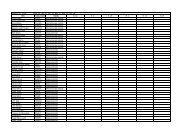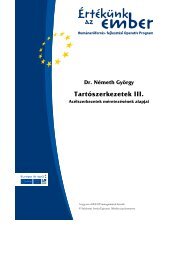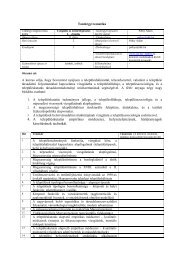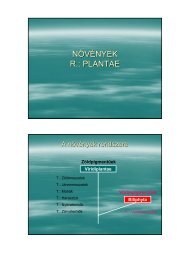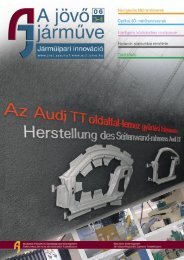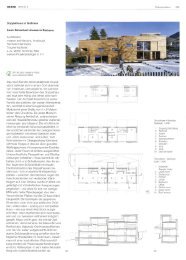Environmental Kuznets curves—real progress or passing the buck ...
Environmental Kuznets curves—real progress or passing the buck ...
Environmental Kuznets curves—real progress or passing the buck ...
Create successful ePaper yourself
Turn your PDF publications into a flip-book with our unique Google optimized e-Paper software.
180<br />
D.S. Rothman / Ecological Economics 25 (1998) 177–194<br />
Fig. 1. Hist<strong>or</strong>ical shares of GDP per sect<strong>or</strong> f<strong>or</strong> <strong>the</strong> US and <strong>the</strong> UK (Data from Maddison (1989, 1995)).<br />
sectional data, respectively, as economic development<br />
proceeds, i.e. income levels increase, <strong>the</strong><br />
dominant sect<strong>or</strong> tends to shift from agriculture to<br />
industry and <strong>the</strong>n to services. The first shift is<br />
likely to result in increased environmental impact,<br />
whereas <strong>the</strong> latter in reduction.<br />
Adding to this seemingly inevitable change in<br />
<strong>the</strong> structure of economies are improvements in<br />
technology over time and changing demands from<br />
<strong>the</strong> people within countries as <strong>the</strong>ir incomes rise.<br />
The latter effect presumes that environmental<br />
quality is characterized as a ‘n<strong>or</strong>mal’ good, i.e. <strong>the</strong><br />
demand f<strong>or</strong> environmental quality rises as consumers’<br />
income rises. This will have an impact on<br />
consumers’ preferences, which can have a direct<br />
effect on <strong>the</strong> structure of <strong>the</strong> economy via purchases<br />
in <strong>the</strong> market. Fur<strong>the</strong>rm<strong>or</strong>e, consumer<br />
preferences can have a strong indirect impact via<br />
<strong>the</strong> policy arena by calling f<strong>or</strong> <strong>the</strong> implementation<br />
of various taxes, tariffs, subsidies and regulations<br />
(Komen et al. (1996) f<strong>or</strong> an empirical example of<br />
w<strong>or</strong>k in this area). Finally, to satisfy this increasing<br />
demand f<strong>or</strong> a cleaner environment from <strong>the</strong><br />
populace, it is argued that nations have a greater<br />
capacity to remedy environmental problems as<br />
<strong>the</strong>ir economies develop, and also m<strong>or</strong>e rapid<br />
growth will mean a m<strong>or</strong>e rapid turnover of an<br />
older, dirtier technology stock with a newer,<br />
cleaner one 4 .<br />
Many of <strong>the</strong>se effects are implicit in <strong>the</strong> empirical<br />
w<strong>or</strong>k to date on <strong>the</strong> EKC. Very little explicit<br />
w<strong>or</strong>k has been undertaken to separate out <strong>the</strong><br />
imp<strong>or</strong>tance of <strong>the</strong> effects of changing composition<br />
and changing technology, however. A time trend<br />
intended to capture technology improvements has<br />
also been inc<strong>or</strong>p<strong>or</strong>ated in some of <strong>the</strong> research<br />
(Grossman and Krueger, 1992, 1994; Shafik and<br />
Bandyopadhyay, 1992; Cropper and Griffiths,<br />
4 See Radetzki (1992) and López (1994) f<strong>or</strong> fur<strong>the</strong>r discussions<br />
on why growth may actually benefit <strong>the</strong> environment,<br />
and also Diwan and Shafik (1992) f<strong>or</strong> a discussion on why<br />
po<strong>or</strong> nations b<strong>or</strong>row against nature ra<strong>the</strong>r than against future<br />
income. Sen (1995) comments on <strong>the</strong> imp<strong>or</strong>tance of a binding<br />
constraint—subsistence—in determining choices that may<br />
have environmental repercussions.





